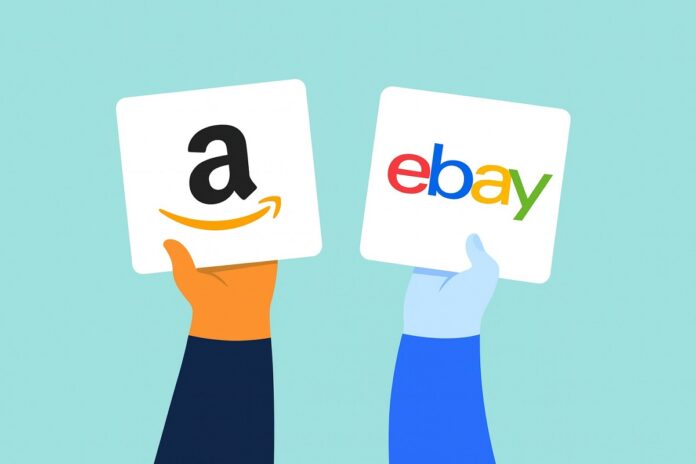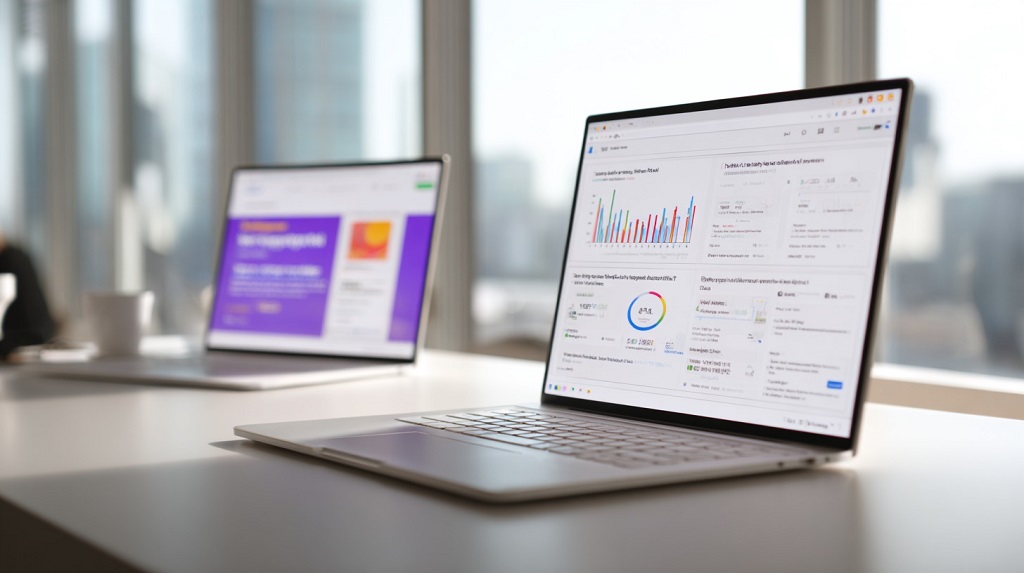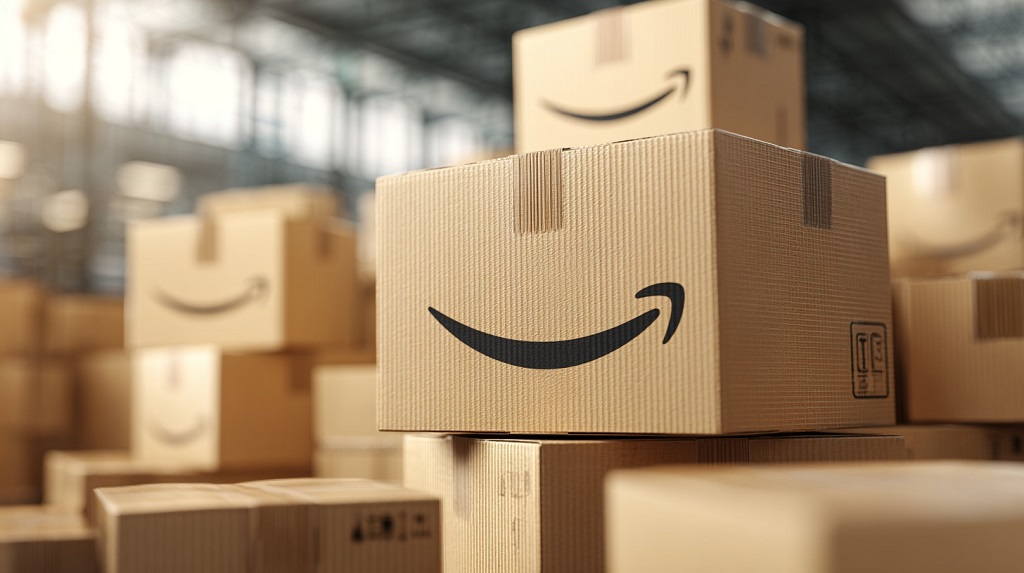
In 2025, Amazon generally offers better return on investment (ROI) for sellers of new, replenishable, and brandable products, while eBay provides stronger ROI for used, collectible, parts-driven, and bulky one-off items.
Amazon’s dominance in demand, Prime-enabled logistics, and stable 2025 fee updates create higher sales velocity and predictable growth. eBay, on the other hand, gives sellers more fee flexibility, lower ad dependence, and greater shipping control, which can mean higher per-order ROI in certain categories.
According to Amazon’s 2024 annual report, total revenue reached $638 billion, with over 60% of sales coming from third-party sellers, who averaged $290,000 per year in U.S. sales.
Meanwhile, eBay’s 2024 gross merchandise volume (GMV) was $74.7 billion, with advertising revenue accounting for 2.3% of GMV in Q4 2024. These numbers reveal the scale difference – and why Amazon usually wins for scalable businesses, while eBay still shines in its niches.
Demand and Buyer Intent

- Amazon: Most U.S. shoppers now begin their product searches on Amazon rather than Google. That alone increases conversion and ROI potential .
- eBay: While smaller in scale, eBay dominates in ecommerce categories like sneakers, collectibles, and vehicle parts. Its buyer base values uniqueness and price flexibility more than speed.
| Platform | Standard Fees (2025) | Notable Changes |
| Amazon | Referral fees ~8–15%; FBA outbound fees based on size/weight | No new U.S. referral or FBA fee types in 2025; fee reductions for certain bulky products; incentives for new selection |
| eBay | Final value fee ~12–14% + $0.30 per order (varies by category) | Feb 2025: ~0.35% increase across most categories |
Advertising Costs

Advertising has become a central driver of marketplace ROI, but the intensity and structure differ greatly between Amazon and eBay. On Amazon, advertising is now a multi-billion-dollar business in its own right.
The company generated approximately $56 billion in ad revenue in 2024, with Sponsored Products making up the bulk of spend. For many sellers, paid ads are no longer optional – visibility in search often depends on having a consistent ad budget. However, the outlook in 2025 is somewhat more favorable compared to the heavy cost inflation of previous years.
Sponsored Product CPCs increased by only about 1% year over year in Q1 2025, suggesting that the market has reached a more stable equilibrium. This allows sellers to plan more confidently and calculate their ACOS and TACOS with better predictability.
At scale, Amazon’s advertising system can be extremely effective, with granular targeting, keyword controls, and retail media options that drive incremental sales, even if it requires consistent investment.
By contrast, advertising on eBay remains a smaller, less aggressive part of the overall seller experience. In Q4 2024, advertising revenue represented about 2.3% of GMV, which is light compared to Amazon’s ad penetration.
Many eBay sellers still manage to build visibility organically through detailed listings, positive feedback, and smart category placement without paying heavily for promoted listings.
While eBay has expanded its Promoted Listings program, it remains optional and less intrusive in search results compared to Amazon’s marketplace. For sellers in categories like collectibles, refurbished electronics, or automotive parts, this lighter ad environment can mean stronger ROI because sales are driven more by item uniqueness and reputation than by budget for clicks.
Ultimately, Amazon advertising delivers scale but at the cost of mandatory spend, while eBay offers more flexibility, which is particularly attractive for sellers who prefer to limit paid media.
Fulfillment and Logistics

Fulfillment is another area where the ROI gap between Amazon and eBay becomes clear. On Amazon, the Fulfillment by Amazon (FBA) program remains the cornerstone of conversion.
Products enrolled in FBA are Prime-eligible, which dramatically boosts trust and sales velocity. Shoppers prioritize fast shipping and free returns, and the Prime badge has become a near-requirement in competitive categories.
In 2025, Amazon made important adjustments that directly impact seller ROI, especially for larger items. Updates to inbound placement fees have reduced costs for certain bulky SKUs, easing the financial pressure on categories that were once difficult to profit from under FBA’s dimensional fee structure. Still, FBA is not without hidden costs.
Sellers who rely on Amazon’s prep services face per-unit charges, such as about $0.55 for labeling and $0.70 for poly-bagging, which quickly add up across hundreds or thousands of units.
To control these expenses, many sellers work with third-party prep centers that specialize in Amazon compliance. These facilities handle tasks like labeling, bubble wrapping, bundling, and cartonization at competitive rates – often $0.50 to $2.00 per unit depending on volume and complexity.
Beyond cost savings, Amazon prep centers can optimize packaging to shift products into lower fee tiers, consolidate shipments to reduce inbound charges, and prevent costly compliance errors. In effect, they become an ROI safeguard, ensuring that sellers can maximize margin while staying within Amazon’s strict FBA requirements.
On eBay, fulfillment is handled very differently. Sellers are responsible for shipping directly to the buyer, which allows more control over packaging, carriers, and delivery speeds.
This flexibility is advantageous for fragile goods, irregularly shaped items, or categories where buyers are less concerned with one-day shipping and more interested in authenticity or condition.
However, the trade-off is that eBay lacks the Prime-style ecosystem that drives impulse conversion and repeat purchases. While eBay has experimented with managed delivery in the past, most sellers still rely on traditional self-fulfillment.
This means ROI on eBay can benefit from lower fulfillment fees, but it may be limited by slower shipping expectations and the absence of Amazon’s logistics trust factor.

| Scenario | Amazon (New Private Label, $30 item) | eBay (Same New Item, $30 item) |
| Landed COGS | $10.00 | $10.00 |
| Marketplace Fee | ~$4.50 referral | ~$3.98 final value |
| Fulfillment/Shipping | ~$4.10 FBA small/standard | ~$5.50 ground shipping |
| Ad Spend | $3.00 (10% ACOS) | $0–$2.40 (optional promoted listings) |
| Net Profit | $8.40 | $8.12–$10.52 |
When eBay Beats Amazon
- Used/refurbished goods and collectibles
- Auto parts and motors
- Heavy or bulky one-offs
When Amazon Beats eBay
- Private label and wholesale new goods
- Everyday essentials and fast-moving SKUs
- Items where Prime speed drives conversion
Bottom Line
- Amazon = Better ROI if you sell new, scalable products and are prepared to invest in ads and logistics.
- eBay = Better ROI if your business is niche, used, collectible, or you want control over shipping and lighter ad costs.
Both marketplaces remain valuable in 2025, but the best choice depends on your inventory and business goals. Many sellers actually use both – Amazon for new inventory, eBay for liquidating returns, one-offs, and hard-to-move goods.
















